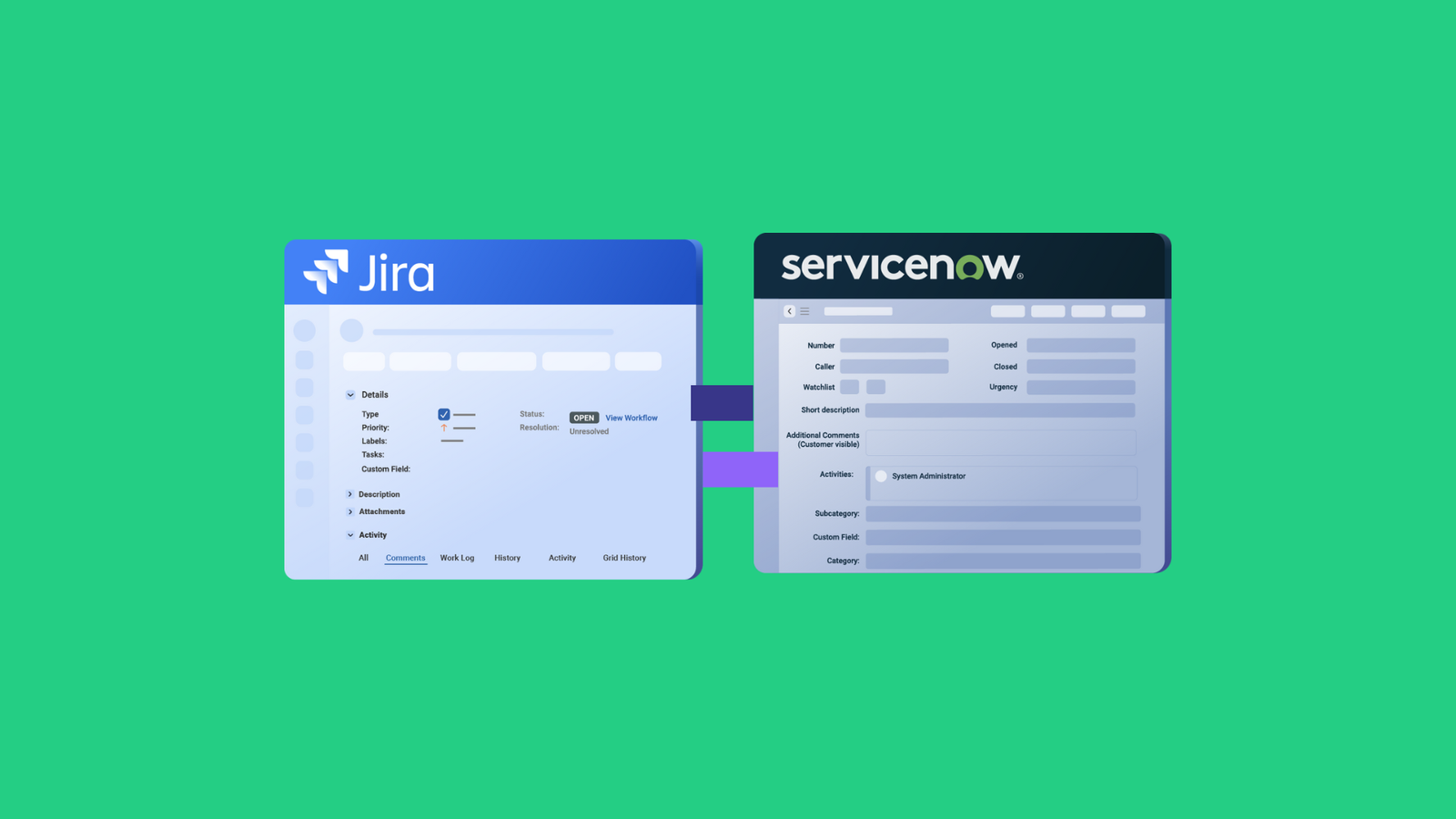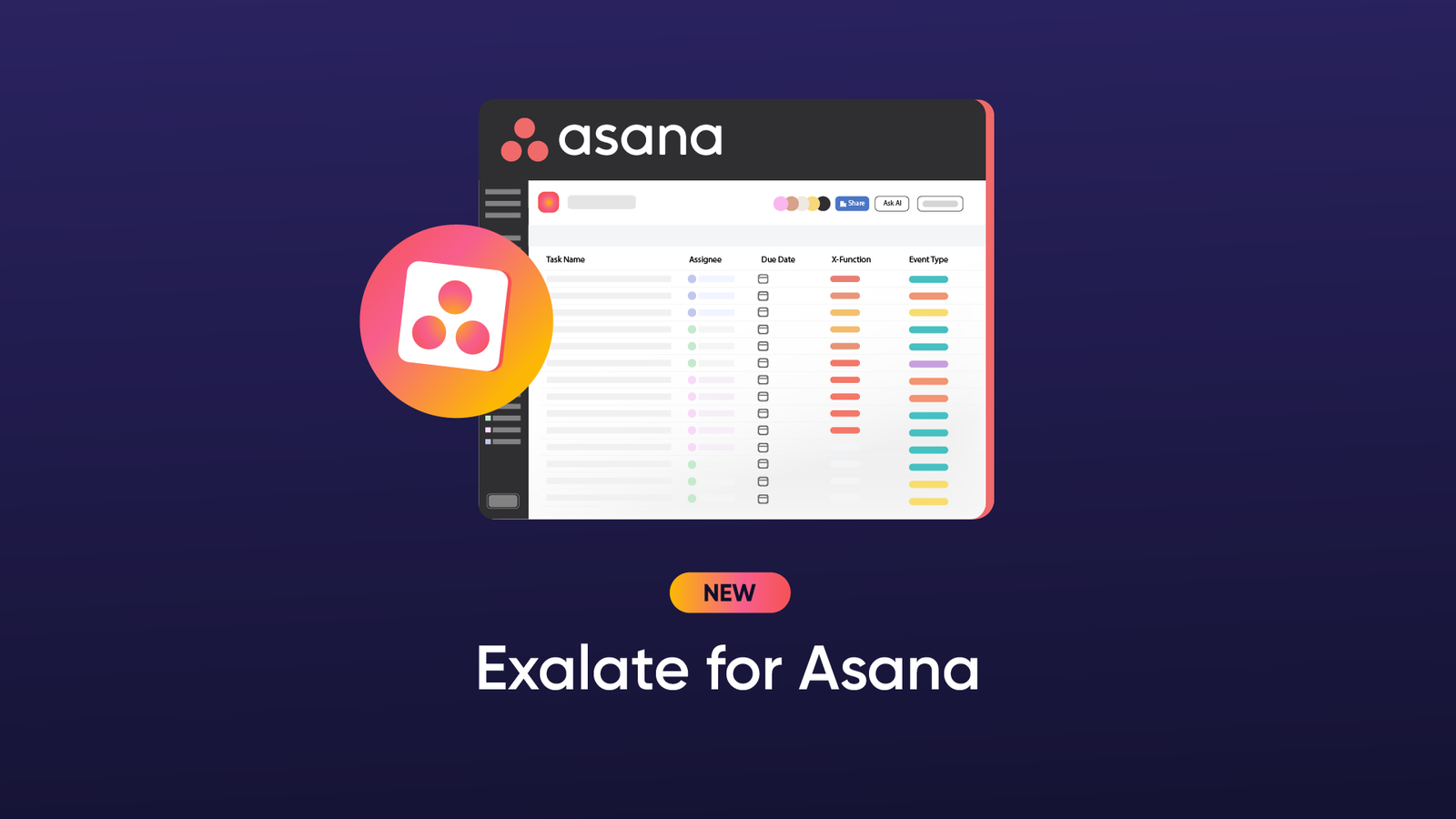Remember when teams huddled over the same screen, using a single app to get things done? Those days are long gone. Today, each team has specialized tools for their tasks. But these tools often don’t talk to each other, leaving vital information siloed.
That’s where two-way synchronization, or two-way sync, comes in. It seamlessly updates, adds, or deletes information across systems, ensuring data consistency and accuracy.
Manually sharing data is one option, but it could be more error-prone and tedious. An automated solution is crucial to keep everyone on the same page in real-time.
Let’s dive deeper into how two-way synchronization works and why it’s essential.
What is a Two-way Sync?
A two-way sync is a process that updates, adds, or deletes information between two connected systems such that changes made in one system are reflected accurately in the other and vice versa.
Imagine a calendar app that you use on your smartphone and your laptop. When you add an event on your laptop, you expect it to appear immediately on your phone, and if you delete it on one device, it should disappear from the other. These simultaneous edits across devices or systems portray what a two-way sync looks like in practice.
In the context of data integration, two-way synchronization, also called bidirectional sync, ensures data remains consistent across two or more systems and minimizes errors arising from outdated or conflicting data.
Additionally, leaving data to remain updated on all devices automatically allows teams to focus on strategic initiatives rather than routine data entry or reconciliation tasks.
Access to real-time synced data empowers teams with actionable insights, enabling faster and more informed decision-making processes.
You might have also come across a one-way sync.

What is the Difference Between One-way and Two-way Sync?
In one-way synchronization, data is passed only in a single direction, from one system to another. Consider a Managed Services Provider (MSP) that provides managed services to its customers. Data almost always passes from the MSP to the customer and never the other way around. This is an example of a one-way synchronization.
In one-way synchronization, data is only allowed to pass from system A to system B and not from system B to system A. If data changes or is deleted in system A, then the corresponding changes are reflected in system B.
This is a little different from automation. Automations are usually one-way, for instance, create a Slack notification when a new lead books a product demo. There’s hardly any one-on-one connection between the automated entities. Once the notification is set off, the relationship ceases to exist.
On the other hand, two-way synchronization is an integration that establishes and maintains an ongoing relationship between the synced entities.
So, if one entity is updated in one system, it’s also updated in another system. When discussing two-way synchronization, the data always remains consistent and accurate between both connected systems.
How does a Two-way Synchronization Work?
There are some simple steps you need to follow to set up a fully functional bidirectional sync.
Step 1: Gather the Requirements
Identify and analyze their data structures and how your workflows are embedded within them. This will come in handy when you want to send data from one system to another, since you don’t want to lose critical information or replace your existing workflows.
For instance, integrating a CRM (Customer Relationship Management) system like Salesforce with an email marketing platform requires understanding how the contacts, leads, and campaigns are structured in both systems.
Step 2: Account for Data Mappings & Customizations
Next, define the fields you want to sync with the other system, as well as how they would correspond (or map) to those in the other system. Such a mapping ensures that relevant information, such as names, addresses, and statuses, is correctly synchronized between systems despite potential differences in data formats or naming conventions.

Step 3: Choose Your Sync Method
REST APIs are endpoints you can leverage to establish a two-way sync between your applications. Typically, software developers or synchronization platforms act as intermediaries who use these APIs to write custom code to enable applications to communicate with each other either in real-time or at scheduled intervals.
These middleware technologies check for updates in both systems to initiate synchronization via data polling or webhooks.
An example of data polling is where a CRM periodically checks for new leads or updates to existing customer records in an email marketing tool, ensuring the system it connects to remains up-to-date.
Webhooks work as an alternative to polling by allowing systems to notify each other immediately when specific events occur, such as a new customer inquiry or a completed purchase.
Step 4: Describe Your Sync Architecture
Sync architecture defines how, when, and what data must flow between the connecting systems.
- The ‘how’ part defines the direction of data flow. For instance, data passes only in a single direction from customer systems to their MSPs. No data passes from the MSP back to the customer.
- The ‘when’ defines the conditions to start an automatic one-way or two-way sync. For instance, automatically sync all bugs labeled ‘todev’ into the dev team’s application.
- The ‘what’ of the sync architecture refers to the actual data that’s being passed between systems.
Choose what you want to sync and refrain from sending any additional data. Sometimes, two-way sync solutions allow you to sync historical data.

Find the Right Solution to Implement Your Two-way Sync
You can either build your own two-way synchronization from scratch by using system APIs or choose to buy a commercial off-the-shelf product.
We also have a guide on why building a two-way sync solution yourself is not always the best option.
Be careful while choosing commercially available synchronization solutions. Choose them categorically based on your requirements and needs.
Give security due importance. When data leaves your system, it becomes more prone to unwanted attacks or unauthorized access.
Your bidirectional synchronization requirements might change with time. New field mappings might arise, or you might stop syncing existing fields. It should be easy to do all of this using the solution you choose.
Having a scalable two-way sync solution will ensure your sync and business requirements always align.
Understanding what two-way synchronization looks like in practice is also important.
What are the Tools and Technologies to Achieve Two-Way Sync?
API Integration (RESTful & SOAP APIs)
APIs allow seamless communication between systems, enabling the exchange of data in real-time. RESTful APIs offer lightweight, easy-to-implement integrations, while SOAP APIs are used for more complex, secure integrations requiring higher reliability and transaction support.
Webhooks
Webhooks are lightweight HTTP callbacks that allow platforms to send real-time data to each other. When a specific event occurs in one system, a webhook triggers an automated action in the other, ensuring timely synchronization of service-related data between platforms.
ETL/ELT Tools
ETL tools facilitate the extraction, transformation, and loading of data between Freshservice and ServiceNow. These tools automate the process of synchronizing data, ensuring that information is accurately transferred and formatted. They also control how and when data is exchanged across systems.
Custom Scripts
Custom scripts allow developers to set up connections using programming languages like Python, Node.js, or Java. These scripts can fetch data, transform it, and push it into the other system. Your script controls how the sync works exactly.
Third-Party Integrations
Third-party integrations allow teams to connect CRM systems, service desks, email platforms, or IT monitoring solutions. These integrations enable cross-platform workflows, enhance data sharing, and improve service management across multiple business applications.
Some notable third-party integration tools include:
- Zapier: This two-way synchronization app automates workflows between applications without needing code. It allows users to create “Zaps” to streamline repetitive tasks like ticket creation or data updates between systems.
- MuleSoft’s Anypoint Platform: It offers a unified integration solution with pre-built connectors and API management capabilities to integrate systems. This integration solution also streamlines workflows and ensures secure and scalable data exchanges across cloud and on-premises environments.
- Workato: This integration and automation platform connects systems using easy-to-use recipes. It allows organizations to automate business workflows, synchronize data, and create complex integrations across systems with little to no coding.
- Dell Boomi: This cloud-based integration platform offers seamless connections between disparate systems. Its drag-and-drop interface and pre-built connectors allow users to automate workflows to ensure smooth data synchronization.
- Exalate: With this flexible, cross-platform integration tool, you can facilitate the seamless, bi-directional synchronization of issues, tickets, and service requests. Exalate also provides configurable mappings and customizable workflows with AI assistance.
- Jitterbit: Jitterbit enables real-time data exchange for automating business processes and workflows with robust transformation tools. It also provides a centralized approach to managing system integrations across an organization.
What are the Benefits of Two-way Sync?
Here are the reasons why teams opt for two-way synchronization tools.
1. Enhanced Collaboration
Two-way sync makes it easy for teams using different platforms to stay on the same page. Changes made in one system update automatically in the other, so everyone sees the same info in real-time. This helps teams collaborate smoothly without the confusion of outdated data.
2. Improved Data Accuracy
With two-way synchronization, data is automatically updated across systems, so there’s no risk of errors from manually transferring info. Everyone works with the most accurate, up-to-date details, preventing mistakes and making sure everyone’s on the same page.
3. Increased Efficiency
No more repetitive data entry. Two-way sync automatically updates multiple systems at once, saving time and reducing manual work. This means employees can focus on more important tasks instead of tracking down or duplicating information.
4. Accurate Real-Time Updates
When you make a change in one system, it instantly reflects in the connected system. This means everyone is always working with the latest data, which speeds up decision-making and keeps projects on track without delays from outdated info.
5. Better Scalability and Flexibility
As your business grows, you can easily add new tools without worrying about compatibility. Two-way sync allows new systems to integrate smoothly with existing ones, ensuring all data stays consistent and making it easier to scale without extra effort.
6. Reduced Risk of Discrepancies and Errors
Two-way synchronization eliminates the chance of conflicting data between systems. Every update made in one platform is instantly reflected across all others, reducing errors, confusion, and redundant work, so teams are always working with the same, correct information.
Use Cases For Two-way Sync
Companies wanting a two-way sync usually try the following two ways: connect applications to their internal teams or connect with their partners, suppliers, vendors, or customers.
Case 1: Support and Development Sync
Often, software development teams prefer to work in their own systems like Jira, GitHub, or Azure DevOps. They have a certain comfort level with these tools since they have their dev workflows set up and don’t want to switch to any other application.
Customer support teams usually have dedicated systems like Jira Service Management (JSM), GitHub, Zendesk, etc.
Certain customer requests to the support team might require the dev team’s attention. Automatic two-way communication between these teams can keep them up-to-date and well-informed on recent customer tickets, enhancing the overall customer experience.
You can also set up your service desk to route tickets to our different DevOps boards. Then updates will be synced back to help keep clients up to date.
Case 2: ITSM Integration
ITSM tools like ServiceNow, ManageEngine’s ServiceDesk Plus, JSM, etc., are the go-to tools for effective service management. Teams using these tools can benefit if service workflows are orchestrated end-to-end and information flows smoothly wherever necessary.
With ITSM synchronization, you can achieve better coordination between different functions like incident management, change management, and the like, leading to smoother workflows and enhanced service delivery.
Case 3: Sales and Marketing Collaboration
Syncing customer data with marketing automation platforms ensures that sales teams have real-time insights into marketing campaigns and vice versa. Such an alignment improves lead nurturing, customer engagement, and overall conversion rates.
Case 4: E-commerce Integration
Integrating an online store with the inventory management system or with a payment gateway ensures products and their pricing are synchronized across all platforms. This can help prevent overselling and build customer loyalty through accurate product information.
Despite having immense benefits, implementing a two-way sync has its own set of challenges.
Case 5: Timely Reporting
Integrating two systems with each other enhances visibility and reporting by consolidating data and creating unified dashboards and reports in one of them. This use case is crucial for organizations that need to track performance, monitor operations, and make data-driven decisions based on real-time insights from various sources.
Case 6: MSP Integration
As an MSP, you can sync data between your ITSM tool and those of external vendors or partners. This use case is particularly important for organizations that rely on third-party providers for IT services.
So, for instance, if multiple ServiceNow incidents and Jira bugs are being reported, the details will all be forwarded to the MSP’s single ServiceNow instance. So changes and updates will be propagated back individually in real-time.
Case 7: Pre-migration
Let’s say your company acquired a small agency that uses Jira and would like to sync their system with your existing Azure DevOps. You can use Exalate to keep both teams in sync temporarily as your team prepares for the final migration.

Challenges of Setting up a Two-way Sync
Two-sync comes with its own complexities that you must handle with care.
Ensuring data changes propagate accurately across systems without conflicts or discrepancies.
Teams today have information that’s more distributed. For them, having the information they require within their own tool has immense benefits.
Though a two-way sync can help them achieve this, if some unwanted data falls through the cracks, it can lead to broken workflows and processes. Sticking with sending only the required data and ensuring your sync security are the only pillars that’ll make your two-way synchronization strong and resilient.
Legacy systems are still very much a part of modern organizations as much as the latest cutting-edge technologies. Implementing a bidirectional sync between these diverse technology stacks is a challenge.
Despite all these challenges, if done properly, two-way sync can be a pleasant experience for your teams. With the right solution to implement it, think of increased team collaborations, reduced interdependency, and the data you need, in the tool you use the most.
Best Practices for Two-Way Sync
Here are some best practices to follow when setting up a two-way synchronization.
1. Choose the Right Integration Tool
Select an integration tool that fits your needs and supports flexible sync options. Tools like Exalate offer customization to help you tailor the integration to your specific use case. This ensures that everything works smoothly and meets your specific requirements.
2. Establish the Data Mapping
Ensure that data fields across platforms are mapped correctly. Without proper mapping, data can be transferred inaccurately, get lost, cause conflicts, or lead to duplication. Take time to align data formats and fields so everything syncs correctly and stays consistent across systems.
3. Test Thoroughly
Before going live with the integration, test it out extensively in a sandbox environment. Make sure the data syncs correctly between systems and no errors occur. This will help you catch any potential issues early, so you can fix them before they impact your daily operations.
4. Monitor and Maintain
Regularly check on the performance of your two-way sync. Keep an eye out for errors, lag, or data mismatches. Ongoing maintenance ensures your integration continues to run smoothly and adapts to any changes in your systems.
5. Involve Stakeholders
Make sure all relevant teams are involved in the integration process. Getting input from stakeholders across departments ensures that the integration meets everyone’s needs and avoids potential hiccups when syncing data between systems.
Exalate: A Customizable Synchronization Solution
Exalate is a one-way or two-way synchronization solution that offers integrations between Jira, Salesforce, Zendesk, ServiceNow, GitHub, etc. It offers a Groovy-based Script mode that basically uses low-code scripts to set up your synchronization the way you want.
Exalate’s Script mode is also AI-enabled. Using AI Assist, you can simply enter your one-way or two-way sync requirements and your scripts are automatically generated. This feature takes into account your inputs, existing configuration, and Exalate’s scripting API to generate the scripts.
As with any AI, it’s possible you might need to refine the scripts or your prompts. So, always review everything before publishing changes.
Here is an example of status mapping between Jira and ServiceNow. When a Jira work is marked as ‘Done’, a resolution note will be added, and the entity will be marked as ‘Resolved’ on the ServiceNow side.
So basically, status changes on one side reflect on the status of the attached entity or work item on the other side.
If you don’t enjoy setting up a sync yourself, you can always choose to offload it to us, and we’ll handle everything for you.
You can always learn more about it through our docs and academy, or you can simply ask Aida your questions. If you still don’t have an answer, feel free to book a call with our sync experts to discuss your use case.
Conclusion
In today’s world of specialized tools, keeping everyone on the same page is a challenge. Two-way synchronization offers a solution to ensure your data remains accurate and consistent across systems. By automating data sharing, teams can focus on strategic work rather than routine data entry.
Whether it’s sales, support, or ITSM, two-way sync enhances collaboration, reduces errors, and empowers teams with real-time information.
Despite its challenges, the right two-way sync solution can transform how your teams work together, making sure everyone has the data they need when they need it.
Recommended Reading:
- How to Get the Most out of Your Workflow Integration
- Automated Integration: A Key to Scalable and Agile Business Operations
- Exploring the Build vs. Buy Integration Debate
- ITSM Integration: Simplify Your IT Services Like Never Before
- The Reality of Business Process Integration
- Perfecting Legacy System Integration For Better Connectivity
- How to Synchronize Epics between 2 Jira Instances



